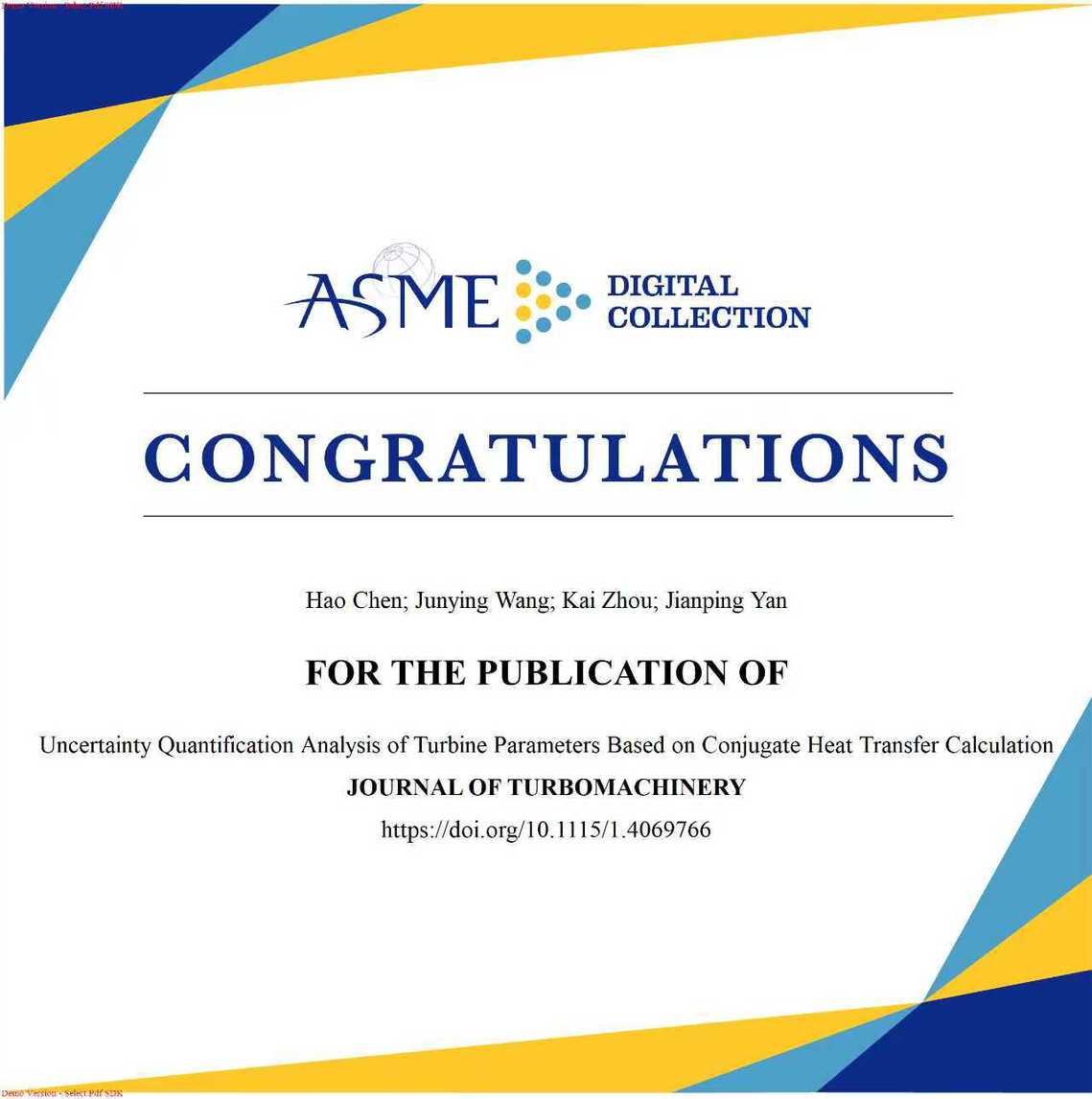《Journal of Turbomachinery》是涡轮机械领域的权威期刊,属于行业内的顶级期刊之一。该期刊由美国机械工程师协会(ASME)出版,专注于燃气轮机、压缩机等涡轮机械技术的研究,涵盖流体动力学、热传递、气动弹性力学等方向。
文章摘要:
(英文版)
ABSTRACT:The energy conversion of aero engines is borne by turbines, which are closely related with engine performance and service life. In order to operate stably in harsh conditions and high-temperature inflow environments, sophisticated cooling structures are needed to help reduce blade temperature, alleviate thermal stress, and avoid erosion. However, there are diverse uncertainties throughout the design, manufacturing, and operational processes, which can have potential negative impacts on performance dispersion and life predictions. This study evaluates the impact of turbine parameters on the coupled fluid-solid thermal transfer analysis and proposes an optimization strategy based on UQ (Uncertainty Quantification) to improve turbine cooling performance. A typical fully cooled turbine was used in the study, with features such as inner coolant passage, impingement cooling, film cooling, rib walls, and pin fins. An automated design platform was created, allowing designer to easily modify parameters and assess aerothermal performance. This platform integrates 3D modeling, meshing, CFD calculations, post-processing, and UQ analysis. With the help of machine learning, deep neural network was used to train a robust and efficient surrogate model. Based on SHAP (Shapley Additive exPlainable) values, an adaptive dimensionality reduction method was developed by selecting the most sensitive geometric parameters, making the high-dimensionality-analysis possible, as well as turbine optimization. The research results show that uncertainty assessment and optimization are of great significance for improving cooling performance and turbine reliability.
KEYWORDS:Cooling turbine; uncertainty quantification; automated design platform; SHAP; adaptive dimension reduction; performance optimization
(中文版)
摘要:航空发动机的能量转换由涡轮承担,其性能与寿命密切相关。为了在严苛环境和高温来流条件下稳定运行,必须采用复杂的冷却结构以降低叶片温度、减轻热应力并烧蚀现象带来的影响。然而,在涡轮的设计、制造与运行过程中存在多种不确定性,这些不确定性对会对其性能分散度和寿命产生潜在的不利影响。本研究针对涡轮几何参数对流固耦合传热特性的影响进行了评估,并基于不确定性量化(Uncertainty Quantification, UQ)提出了一种用于提升涡轮冷却性能的优化策略。研究对象为典型的全冷却涡轮,其结构包括内部冷却通道、冲击冷却、气膜冷却、肋条以及扰流柱等特征。为此,构建了一个自动化设计平台,使设计人员能够方便地修改参数并评估气动热性能。该平台集成了三维建模、网格划分、CFD计算、后处理及UQ分析等功能。借助机器学习技术,采用深度神经网络(Deep Neural Network, DNN)建立了稳健且高效的代理模型。基于SHAP(Shapley Additive exPlainable)值提出了一种自适应降维方法,通过选取对气动热特性最敏感的几何参数实现了参数降维与涡轮优化设计。研究结果表明,不确定性评估与优化对提升涡轮冷却性能及提高其可靠性具有重要意义。
关键词:全冷却涡轮;不确定性量化;自动化设计平台;SHAP值;自适应降维;性能优化
新闻图片:



